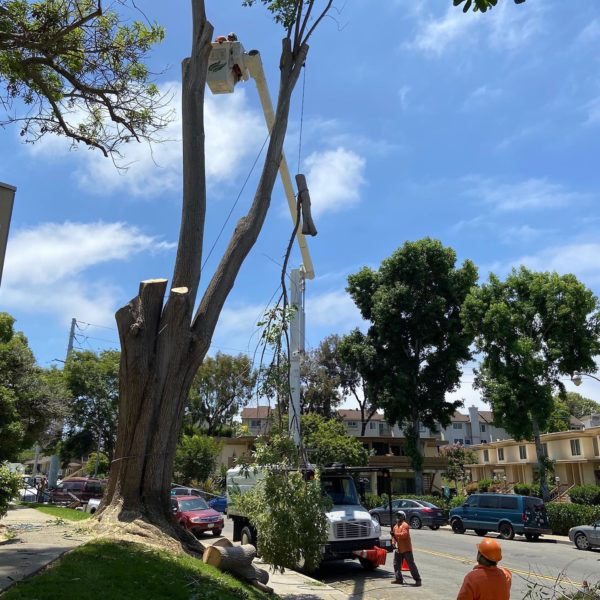This article deals specifically with tree growth regulators and drought. For more information about the benefits of growth regulators, click below:
By now, we’ve all heard a lot about the megadrought. We’re here to offer you a powerful weapon in the battle against the driest 22-year period in 1,200 years.
TLDR
Growth regulators are EPA-approved chemicals that limit the growth of trees and shrubs by inhibiting stem-elongation. That means the tree continues to produce the same number of leaves but its branches, trunk and roots grow less.
Drought Resistance Powers Activate
Growth regulators encourage the development of fine root hairs which allow trees to take in moisture more efficiently. They also inhibit the tree from getting bigger (e.g. growing a larger canopy) so the tree focuses instead on creating a stable root system, increasing chlorophyl in leaves (which equals a greener canopy), and fighting disease and pests.
But Wait, There’s More
Additional benefits of growth regulators include:
-Less trimming, which is stressful to the tree and leaves wounds where disease can enter
-Fewer removals as trees are less likely to become crowded
-Protection of infrastructure as trees don’t encroach as quickly on buildings and hardscape
Talk to an arborist about growth regulators
More Good Advice
How Important is Watering?
Thirsty trees don’t show signs are clearly as other plants, which means they might suffer a lot of drought stress before you realize they’re thirsty. We’ve talked before about how drought-stressed trees are MUCH more susceptible to pests and disease.
Sacrifice the Grass
When rationing water, prioritize trees over grass. After turning brown, grass will come in green again with seasonal rains or watering, but trees can suffer permanent damage from periods of drought. According to the Morton Arboretum, “Drought stress develops in plants when the available soil water becomes limited. As this happens, young roots are killed outright, reducing the plant’s ability to absorb sufficient water. The soil also becomes hard and compact as it dries, reducing oxygen to the roots.” Source
Set a Timer
Make the most of your watering by avoiding the hottest part of the day when evaporation will steal moisture away from your trees. Always set irrigation timers to run in the early morning.
Water Separately
Grass and trees have different watering needs. Sprinklers that are programmed to water grass will NOT give sufficient water to trees. This goes double if you’ve had drought-tolerant landscaping installed. No tree is drought-proof so you’ll need to make sure they have their own irrigation. A drip line is ideal because it will water slowly, allowing the tree to take in maximum hydration without the damage and rot a sprinkler spraying directly on a trunk can do.

Generally, trees need 10 gallons of water per inch of the tree’s diameter EVERY TIME you water. So how often should you water? That depends on the species and maturity of the tree as well as the time of year and current conditions. Talk to your tree care provider about how much to water your trees, especially those that are important to the landscape or property.
Mulch
Mulch is an inexpensive, environmentally-friendly way to maximize watering. Mulch keeps water from evaporating out of soil during hot weather and makes it unnecessary (and impossible) to mow around trees, which can damage roots and leave them vulnerable to disease. Decomposing mulch also provides trees with important nutrients.
Remember to mulch a 2″ – 4″ deep circle around the tree and do NOT pile mulch up the tree trunk like a “mulch volcano,” which puts the tree at risk of fungus and rot.

Like This

NOT Like This
The Cost of NOT Watering
Obviously, there is a cost associated with watering and you may be hesitant to water your trees as much as we suggest. But balance this cost against the cost of treating a sick tree or removing a dead one. Also consider the impact on the attractiveness and appeal of the property without its trees. It’s like they say, a drop of prevention is worth a bucket of cure.
How can we help? Contact us!

